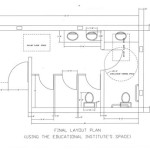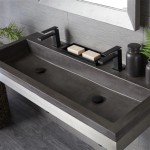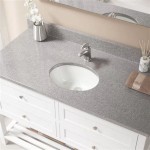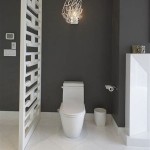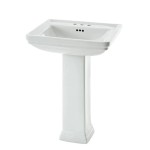DIY All-Purpose Bathroom Cleaner: A Comprehensive Guide
Maintaining a clean and hygienic bathroom is crucial for overall health and well-being. Commercial bathroom cleaners often contain harsh chemicals that can be detrimental to both human health and the environment. A viable alternative is creating an all-purpose bathroom cleaner at home, using readily available and environmentally friendly ingredients. This approach not only reduces exposure to potentially harmful chemicals but also provides a cost-effective and customizable cleaning solution.
The effectiveness of a DIY bathroom cleaner hinges on understanding the principles of cleaning. Bathroom grime is primarily composed of soap scum, hard water stains, mildew, and general dirt and debris. Addressing each of these components requires different cleaning agents. Therefore, a comprehensive all-purpose bathroom cleaner should incorporate ingredients that can tackle multiple types of buildup.
Key Ingredients for Effective Bathroom Cleaning
Several natural ingredients possess potent cleaning properties suitable for bathroom environments. These ingredients are generally safe for use on most bathroom surfaces and can be combined to create a powerful and versatile cleaning solution. Selecting the right combination of ingredients ensures optimal cleaning performance while minimizing potential damage to surfaces.
Vinegar: Distilled white vinegar is a staple in many DIY cleaning recipes due to its acidic nature. Acetic acid, the active component in vinegar, effectively dissolves hard water stains, soap scum, and mineral deposits commonly found in bathrooms. Vinegar also exhibits antimicrobial properties, helping to disinfect surfaces and inhibit the growth of mold and mildew. However, vinegar should be used with caution on natural stone surfaces like marble and granite, as it can etch or dull the finish over time.
Baking Soda: Sodium bicarbonate, commonly known as baking soda, is a mild abrasive cleaner and deodorizer. Its slightly alkaline pH helps to neutralize acidic odors and loosen grime. When combined with vinegar, baking soda creates a fizzing reaction that can help lift stubborn stains and buildup. Baking soda is safe for use on most bathroom surfaces, including porcelain, ceramic tile, and fiberglass.
Hydrogen Peroxide: Hydrogen peroxide is a powerful oxidizing agent with disinfecting and bleaching properties. It is effective against a wide range of bacteria, viruses, and fungi, making it a suitable ingredient for sanitizing bathroom surfaces. Hydrogen peroxide can also help to lighten stains and remove discoloration from grout and other porous materials. It is important to note that hydrogen peroxide can have a bleaching effect, so it should be tested on an inconspicuous area before applying it to the entire surface, especially on colored or painted surfaces.
Essential Oils: In addition to their aromatic properties, certain essential oils possess antimicrobial and antifungal properties that can enhance the cleaning power of a DIY bathroom cleaner. Tea tree oil, eucalyptus oil, and lavender oil are popular choices for bathroom cleaning due to their disinfectant and deodorizing effects. Essential oils should be used sparingly, as they can be irritating to some individuals. A few drops are generally sufficient to provide a noticeable fragrance and antimicrobial boost to the cleaning solution.
Castile Soap: Castile soap is a gentle, vegetable-based soap that can be used to emulsify dirt and grime. It is a versatile ingredient that can be added to a DIY bathroom cleaner to improve its overall cleaning performance. Castile soap is biodegradable and free from harsh chemicals, making it a safe and environmentally friendly option. It’s important to choose a pure castile soap, as some variations may contain additives that are not desirable in a DIY cleaner.
Formulating the All-Purpose Bathroom Cleaner
Creating an effective DIY all-purpose bathroom cleaner involves combining the aforementioned ingredients in appropriate proportions. The specific recipe can be adjusted to suit individual preferences and cleaning needs. However, a general guideline is to maintain a balance between the cleaning, disinfecting, and deodorizing properties of each ingredient. The following are a few recommended recipes:
Recipe 1: Vinegar and Baking Soda Cleaner
This is a basic and versatile cleaner suitable for general bathroom cleaning tasks.
- 1 cup distilled white vinegar
- ½ cup baking soda
- 1 gallon (3.7 liters) hot water
Instructions: Combine the vinegar and baking soda in a bucket. The mixture will fizz. Add the hot water and stir until the baking soda is dissolved. Use a sponge or cloth to apply the solution to bathroom surfaces. Let it sit for a few minutes to loosen grime, then scrub and rinse with clean water.
Recipe 2: Hydrogen Peroxide and Essential Oil Cleaner
This recipe is ideal for disinfecting and sanitizing bathroom surfaces.
- 1 cup 3% hydrogen peroxide
- 10 drops tea tree oil
- 10 drops eucalyptus oil
- Spray bottle
Instructions: Combine the hydrogen peroxide and essential oils in a spray bottle. Shake well to mix. Spray the solution onto bathroom surfaces and let it sit for 5-10 minutes. Wipe clean with a damp cloth. This solution should be stored in a dark spray bottle to prevent the hydrogen peroxide from degrading.
Recipe 3: Castile Soap and Vinegar Cleaner
This recipe provides a good balance of cleaning and deodorizing properties.
- 2 tablespoons liquid castile soap
- ¼ cup distilled white vinegar
- 2 cups water
- 10 drops lavender essential oil (optional)
- Spray bottle
Instructions: Combine the castile soap, vinegar, and water in a spray bottle. Add the essential oil, if desired. Shake gently to mix. Spray the solution onto bathroom surfaces and wipe clean with a damp cloth.
Recipe 4: Heavy-Duty Grime Remover
To tackle stubborn grime and soap scum, a concentrated paste can be prepared using baking soda and a small amount of water. Apply the paste to the affected area, allow it to sit for 15-20 minutes, and then scrub vigorously. Rinse thoroughly with water.
- ½ cup baking soda
- Small amount of water to form a paste
Instructions: Mix baking soda with enough water to create a thick paste. Apply the paste to areas with heavy grime or soap scum. Let it sit for 15-20 minutes. Scrub vigorously with a sponge or brush. Rinse thoroughly with water.
Safe and Effective Application Techniques
Proper application techniques are essential for maximizing the effectiveness of a DIY bathroom cleaner and minimizing potential damage to surfaces. Before applying any cleaning solution, it is crucial to test it on an inconspicuous area to ensure that it does not cause discoloration, etching, or other undesirable effects. This is especially important when using vinegar or hydrogen peroxide on delicate or sensitive surfaces.
When cleaning bathroom surfaces, it is recommended to use a soft sponge, microfiber cloth, or non-abrasive scrubbing brush to avoid scratching or damaging the finish. For hard-to-reach areas, such as grout lines or corners, a small brush or toothbrush can be used to effectively remove dirt and grime. Apply the cleaning solution evenly over the surface and allow it to sit for a few minutes to penetrate the buildup before scrubbing. Rinse thoroughly with clean water to remove any residue. For stubborn stains or buildup, repeat the process as needed.
Ventilation is also a crucial consideration when using any cleaning product, including DIY solutions. Ensure that the bathroom is well-ventilated by opening windows or turning on the exhaust fan to prevent the buildup of fumes. This is particularly important when using vinegar or hydrogen peroxide, as these ingredients can release strong odors. It is also advisable to wear gloves and eye protection when handling cleaning solutions to prevent skin irritation or eye contact.
Certain surfaces require special care when cleaning. As previously mentioned, vinegar should be used cautiously on natural stone surfaces. Instead, a pH-neutral cleaner specifically designed for stone surfaces should be used. Similarly, abrasive cleaners should be avoided on delicate surfaces such as acrylic or fiberglass tubs, as they can scratch or dull the finish. For these surfaces, a gentle cleaner and a soft sponge should be used.
Proper storage of the DIY bathroom cleaner is also important. Store the cleaner in a clearly labeled container and keep it out of reach of children and pets. It is also recommended to store the cleaner in a cool, dark place to prevent the degradation of the ingredients. Some DIY cleaning solutions, such as those containing hydrogen peroxide, may have a limited shelf life, so it is best to prepare fresh batches as needed.
In summary, crafting an effective DIY all-purpose bathroom cleaner is a simple and cost-effective way to maintain a clean and hygienic bathroom environment while reducing exposure to harsh chemicals. By understanding the properties of various natural ingredients and employing safe and effective application techniques, individuals can create a customized cleaning solution that meets their specific needs and preferences.

5 Awesome Homemade Bathroom Cleaner Recipes Spend With Pennies

3 Ingredient All Purpose Cleaner That Really Works

Diy All Purpose Spray Cleaner Cleaning Kitchen Bathroom

12 Natural Cleaning Recipes Printable Cheat Sheet

4 Reasons To Make Your Own Cleaning S

How To Make Homemade All Purpose Cleaner That Really Works Bren Did

All Natural Diy Cleaners You Can Make In 5 Minutes Or Less

Diy All Purpose House Cleaner Our Oily

How To Make Homemade All Purpose Cleaner That Really Works Bren Did

The Best Homemade Bathroom Cleaner Scientifically Proven
